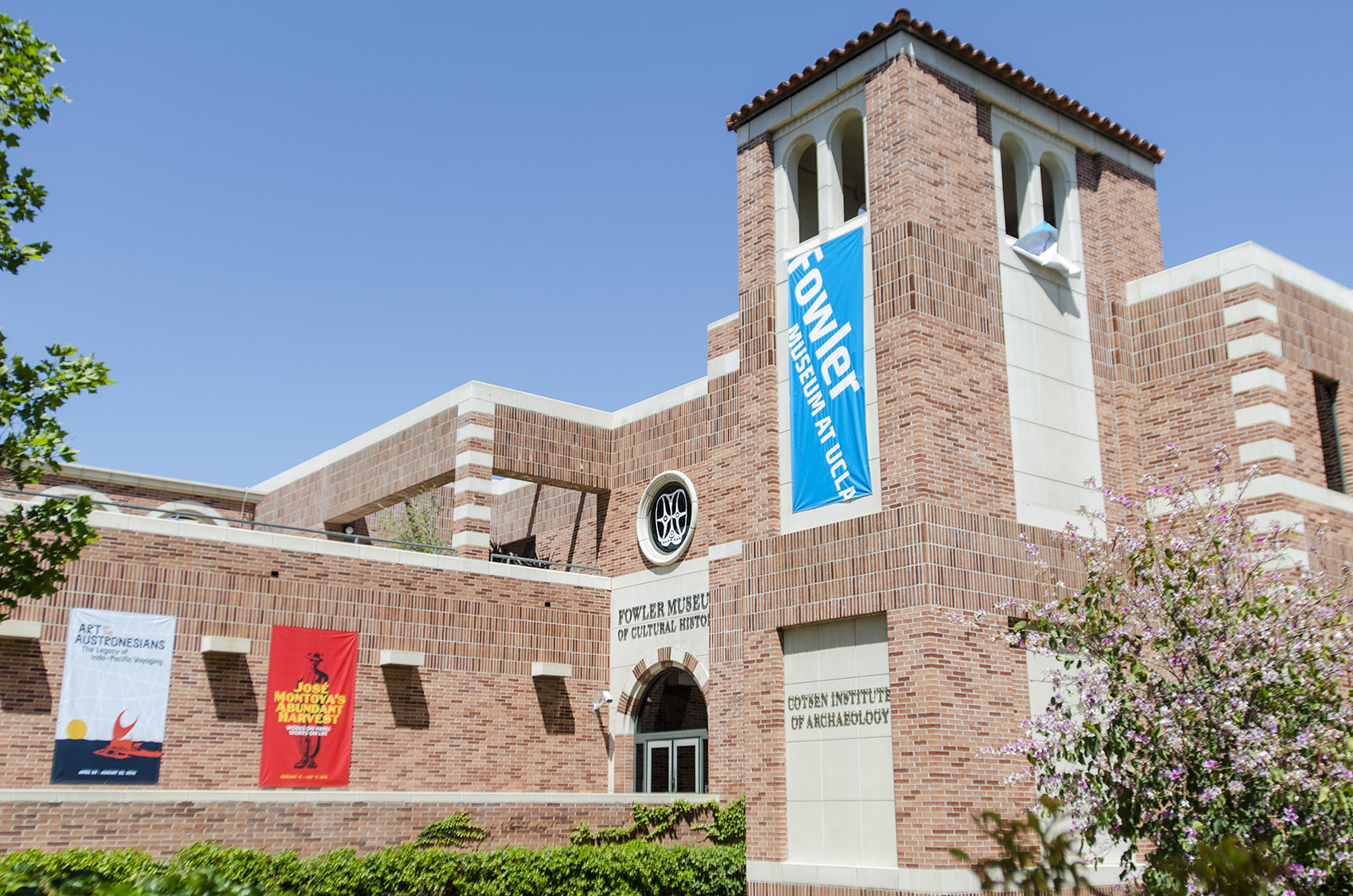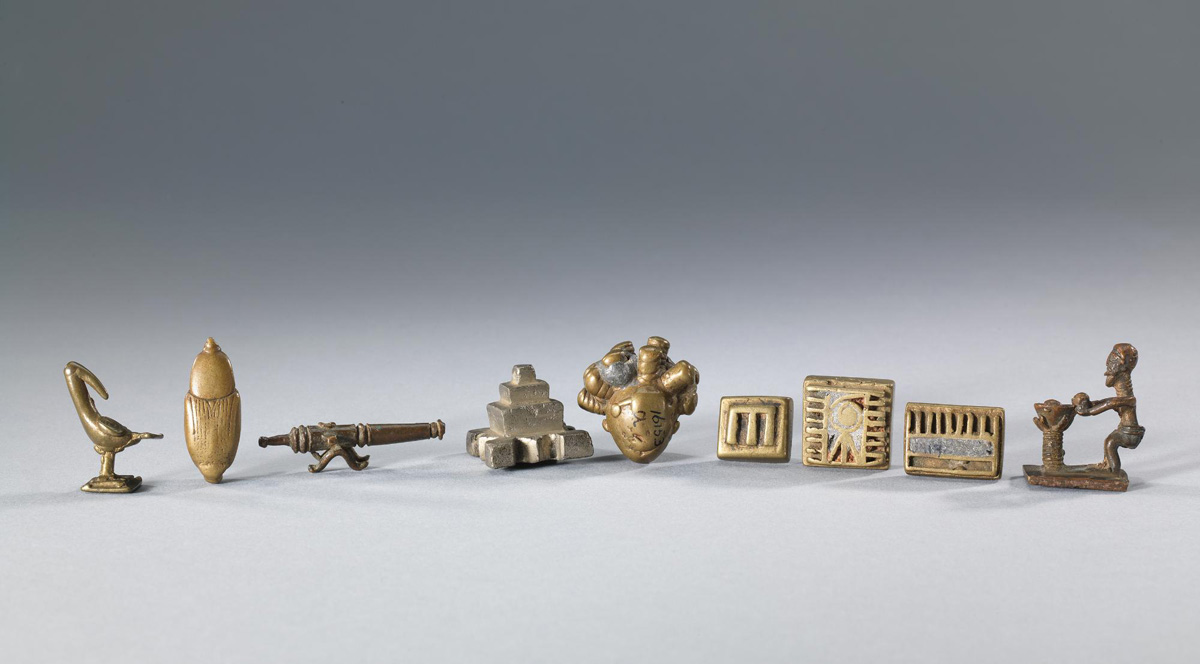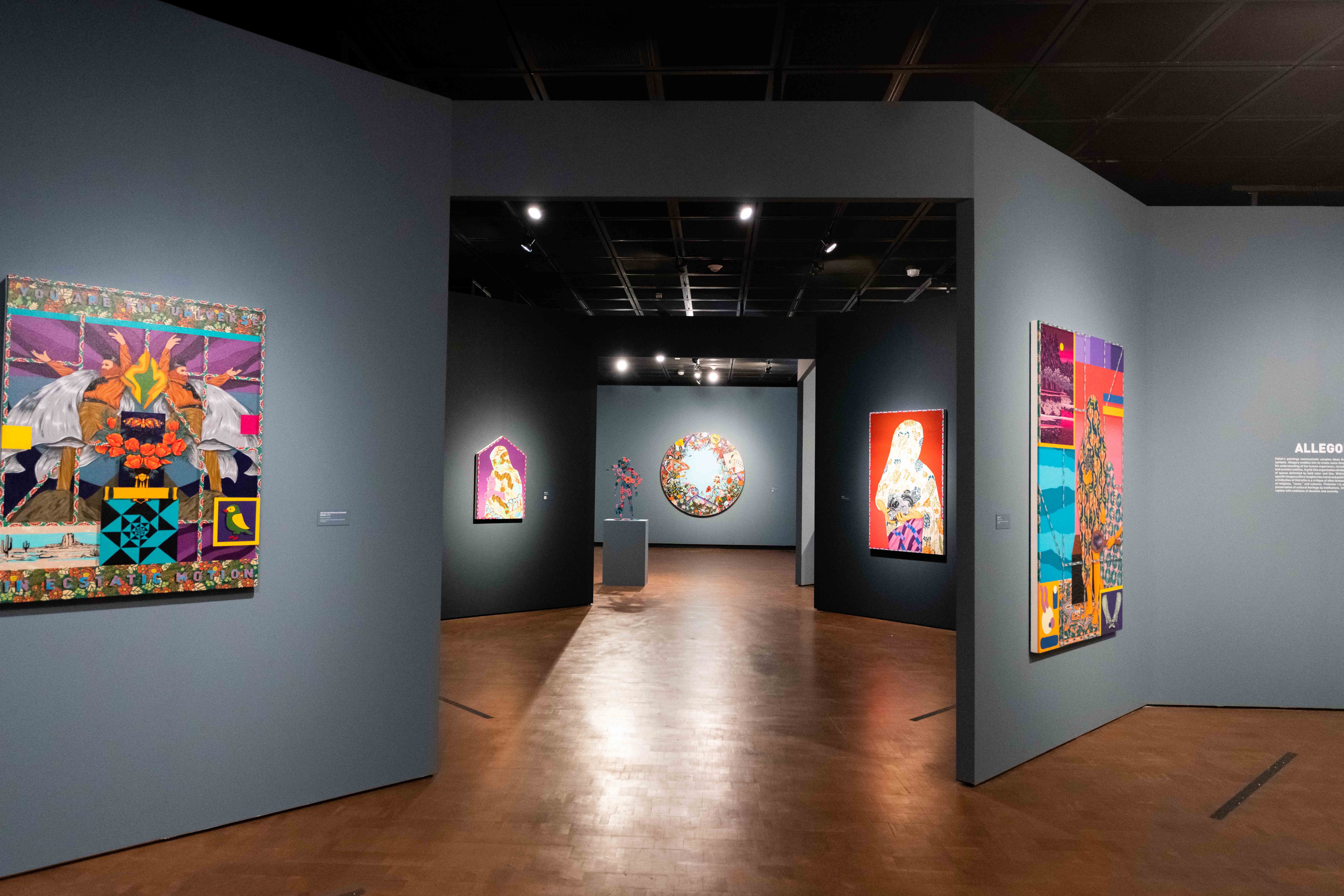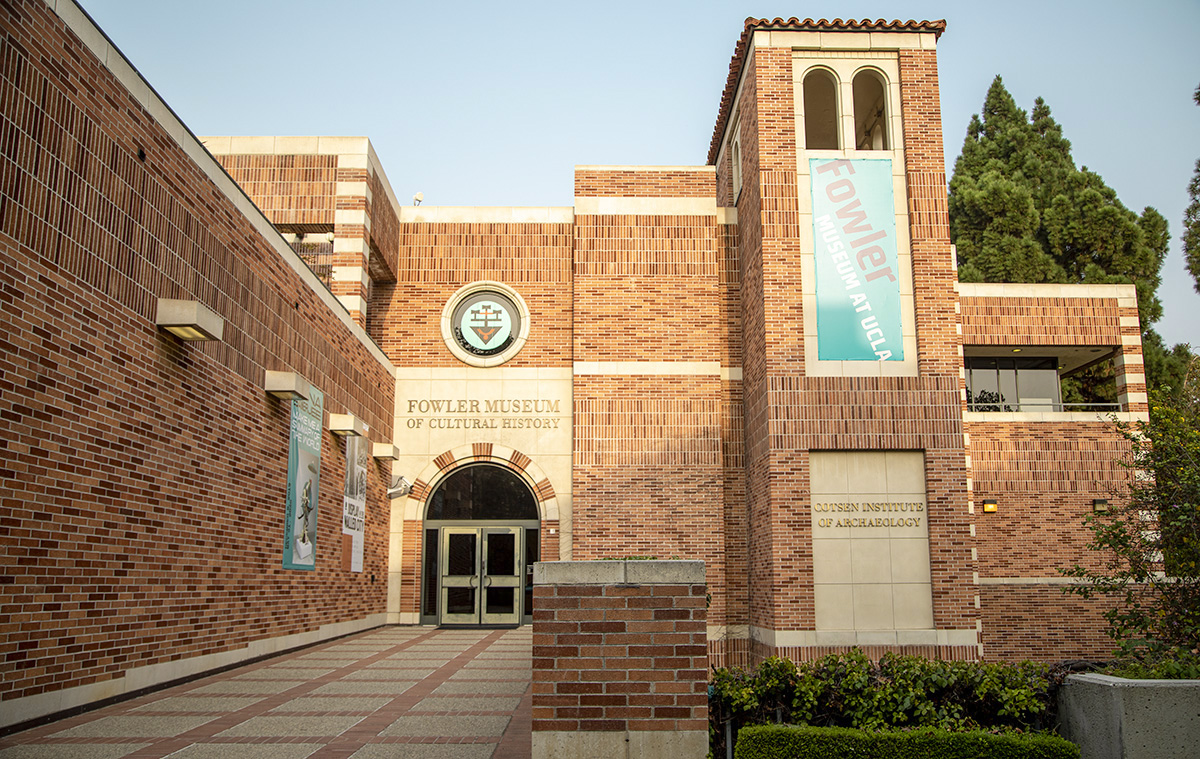Editorial: The Fowler Museum must continue committing voluntary acts of repatriation
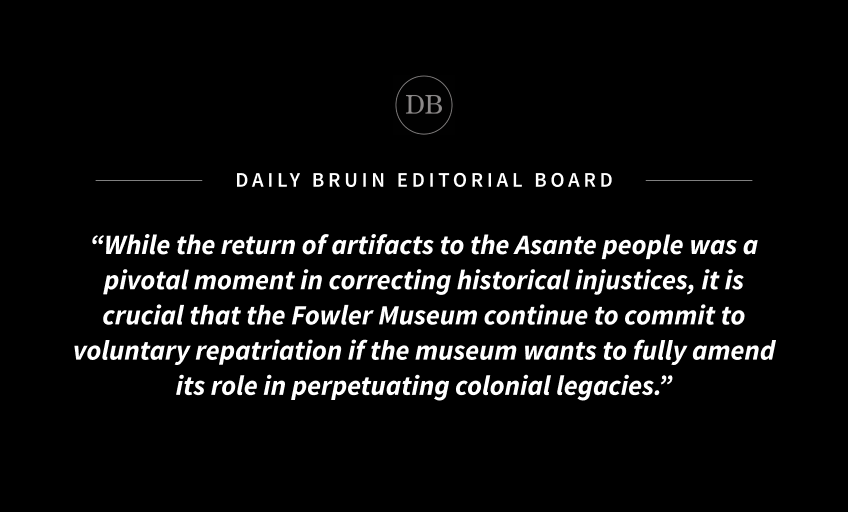
By Editorial Board
March 10, 2024 9:21 p.m.
This post was updated March 10 at 9:50 p.m.
They marched into the city in the early morning light.
Wearing pith helmets and wielding rifles affixed with bayonets, the British colonial soldiers were shocked by what they found.
They stood in Kumasi, capital city of the Asanteman – the kingdom of the Asante – in what is today part of Ghana. Reports in British newspapers praised the architecture of the city, particularly its homes, and lauded its sanitation systems, far cleaner than the towns of Europe.
They marveled at the palace of the kingdom’s monarch, the Asantehene, with its massive library full of literary works in many different languages and the ornate craftsmanship of the goods of gold and other precious metals left behind.
Even amid the chaos sparked by the advances of the British colonial forces, Kumasi remained the awe-inspiring heart of the Asante empire.
The looting began almost immediately.
Artifacts. Clothing. Anything that was not too heavy to carry back through the jungle.
They pillaged all they could find.
On Feb. 6, 1874 – two days after the British entered Kumasi – the army’s commander, impatient that the Asantehene had refused to surrender, ordered his troops to destroy the city.
Illustrations in British newspapers from the period conveyed the scenes of destruction and horror in Kumasi that day.
Soldiers went door-to-door, forcing the remaining residents from their homes at gunpoint. Then, they set fire to the houses and watched a city home to tens of thousands burn to the ground.
The palace, which they perhaps could not burn, was blown up with explosives.
And then they left, carrying all they had stolen to the coast, where many of the looted goods were auctioned off.
Four of the artifacts were plundered that day, alongside an additional three objects forcefully ceded to the British by the Asante under the harsh terms of the Treaty of Fomena that concluded the conflict, then circulated in private hands.
In 1965, only eight years after Ghana secured its independence from British rule, those items were donated to UCLA’s Fowler Museum by the Wellcome Trust, a charitable organization founded by a wealthy British pharmaceutical magnate.
For nearly 60 years, the artifacts languished in the depths of the museum’s collection. According to Erica Jones, a senior curator of African Arts at the museum, the pieces had been left in storage for so long that no one had noticed their documentation noted they were looted and even included the names of the soldiers who took them.
A century and a half after they were stolen, these seven objects were finally returned to Kumasi, handed by representatives of the museum to the current Asantehene, Otumfuo Osei Tutu II.
The repatriation of the cultural items to the Asante Kingdom is a significant and meaningful move by the Fowler Museum, especially since the museum discovered the artifacts were stolen and initiated the return themselves, adhering to voluntary ethical return programs.
The Fowler Museum has the responsibility of revisiting each of its artifacts in order to ensure the item’s history is thoroughly researched and returned to its rightful owners if the items were looted from any native population.
Currently, the Fowler Museum is focusing on the history behind the 30,000 items the museum received in 1965 from the Wellcome Trust, checking to see which items were looted.
However, the Fowler Museum has more than 600,000 archaeological items and 120,000 art and ethnographic objects from Native and Latin America, Africa, Asia and the Pacific – all parts of the world that were affected by colonial expansion and faced the theft of cultural works.
It’s clear, then, that the legacy of the prolific pillaging associated with the imperialist projects of the West, particularly in recent centuries, far overshadows the repatriation efforts of individual museums.
Around 50,000 ancient African artifacts are currently held in American museums, alongside hundreds of thousands of artifacts held in European institutions. While some of these objects were not directly taken by force, the immensely destructive legacy of Western colonization offers clear evidence of the role of coercion and state violence in the creation of these collections.
The remains of over 110,000 Indigenous persons, including Native Americans, Hawaiians and Alaska natives – many of them stolen from grave sites – are still kept by museums and research institutions in the United States, despite the enactment of the Native American Graves Protection and Repatriation Act in 1990.
The sheer scale of these collections, which may only scratch the surface of the vast destruction wrought by imperialism, are often reflective of cultural genocide policies directed by colonial powers against the colonized.
The repatriation of cultural and historical artifacts to formerly colonized peoples will not undo the atrocities inflicted against them.
But the acceleration of these efforts remains necessary to facilitate the renewal of cultures damaged or destroyed by colonial violence and subjugation, and to preserve their heritage and cultural identity.
The hoarding of cultural artifacts in foreign academic institutions, where they are often inaccessible to those most familiar with their cultural significance, is also damaging to efforts at greater historical research and understanding. The theft and razing of cultures under the domination of imperial powers has long been documented as a political tool to force marginalized peoples to assimilate into colonial projects or to eliminate them completely.
Returning to the Asante, who were forced to become British colonial subjects after 1902, the sacking of Kumasi’s aftermath is a critical example.
The city’s destruction and the expropriation of its residents’ cultural works were explicit efforts to destroy the Asante people and further facilitate British colonial expansion in the region.
But the Asante, in many ways both similar to and distinct from other colonized peoples across the globe, were profoundly capable and often successful in the century-long efforts to preserve their sovereignty from the British.
A major factor in the rise of this empire, one of the dominant powers in the region, however, was the Asante Kingdom’s frequent collaboration with major European powers, including its active role in the transatlantic slave trade.
This highlights the greater historical complexity of this issue. But even this power that the Asante were able to accrue through morally questionable means could neither protect them from colonial encroachment nor from the plundering of their cultural artifacts.
Even today, the consequences are still stark. An unfathomable amount of objects were stolen from Kumasi during its occupation and subsequent torching by the British. But only a small fraction of those artifacts have been repatriated, including the seven returned by the Fowler Museum.
How much worse, then, must the possibility of repatriation be for the many colonized peoples who lacked the same level of political or military power as the Asante?
The evidence strongly suggests that current repatriation programs at most major museums and research institutions are wildly insufficient.
While some museums have engaged in efforts to loan back works to their original owners – such as the British Museum and the Victoria and Albert Museum temporarily returning 32 artifacts to the Asante people this year – efforts like these are not enough. Considering these artifacts were unlawfully taken in the first place, museums with stolen items have no jurisdiction to maintain these pieces, no matter how much time has passed.
As a part of an academic institution that already resides on stolen Indigenous land, the Fowler Museum must work to further rectify UCLA’s history of engaging in theft from native peoples by allocating resources toward the sourcing of each artifact and actively engaging in voluntary repatriation efforts.
While the return of artifacts to the Asante people was a pivotal moment in correcting historical injustices, it is crucial that the Fowler Museum continues to commit to voluntary repatriation if the museum wants to fully amend its role in perpetuating colonial legacies.



